Decarboxylation
CBD and cannabis products have invaded the world. After being legalized by the 2018 Farm Bill, the cannabis and hemp plant found their way into the mainstream cannabis community of dietary supplements. The active compounds in these plants soon became a much-studied focus of the scientific and medical fields.
As these fields started digging deeper and researching about this new wonder chemical extracted from cannabis plant matter. Despite all these efforts and while a lot has been discovered, there are still a lot of unknowns and gaps yet to be discovered for cannabis and its potential health benefits.
Active Cannabis Compounds: THC and CBD
The main active cannabis Sativa compounds extracted from the plant material are THC or CBD. Although THC and CBD come from raw cannabis, they are vastly different in their properties. Let’s break down the difference between THC and CBD.
CBD
The Cannabidiol, CBD is one of the major cannabinoids found in cannabis plant material.
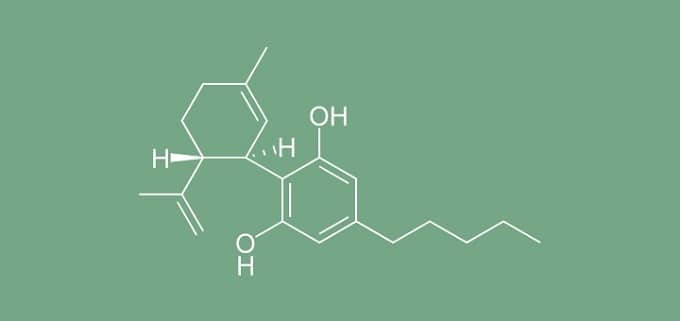
CBD is known to possess many potential health and therapeutic benefits, including anti-anxiety and anti-inflammatory properties.
THC
Tetrahydrocannabinol, THC is also one of the major cannabinoids found in raw cannabis, but active THC is the main psychoactive compound in cannabis that produces psychoactive effects on the user. In other words, it gives a person a “high feeling:”. Consuming or smoking cannabis with high amounts of THC will give a person the psychoactive effect.
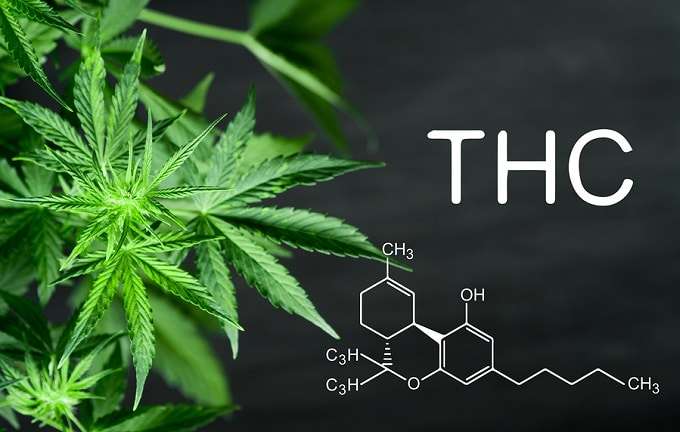
During the early stages of research, CBD was initially mistaken for the THC component of cannabis. However, one new factor that everyone should start learning about to understand these compounds better is a term called “decarboxylation”.
Decarboxylation methods are a major step in the production of several active components of cannabis like CBD, THC, and CBG. So, cannabis decarboxylation is necessary for the production of medical marijuana, recreational marijuana, and CBD products.
If you use any of the active ingredients of cannabis, it is essential to learn about decarboxylation and what it means to decarboxylate cannabis, or what decarbed cannabis is.
What is Decarboxylation?
Phytocannabinoids are naturally occurring cannabinoids in raw cannabis plant material. It is important to note that both terms refer to the same element. They are produced by the small glands of the plant, are insoluble in water but dissolved in oil and alcohol. Out of the 480 chemicals found in cannabis, there are 85 that are cannabinoids1.
CBD and THC levels in freshly harvested raw cannabis are not found in high amounts. They are formed through a process called decarboxylation using their corresponding acids that are predominant in the plants2.
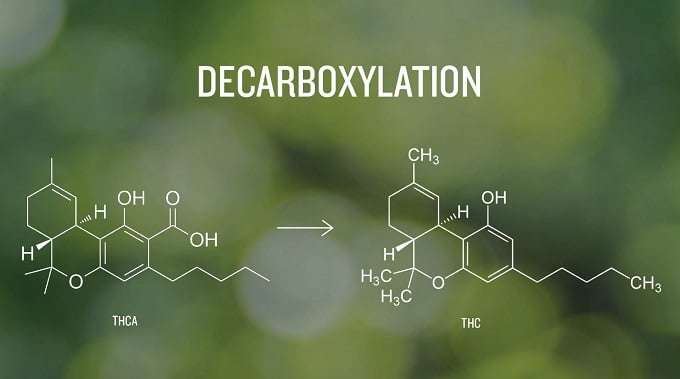
Decarboxylating refers to a process where cannabis goes through a chemical reaction to remove a carboxyl group from a molecule. When it comes to the CBD, the carbon is removed from the carbon chain releasing carbon dioxide. With cannabis, the process of the decarboxylation reactions converts inactive compounds into active ones that essentially unlocks their therapeutic effects.
The Process of Decarbed Cannabis
A Decarboxylation reaction converts acidic cannabinoids present in cannabis into non-acidic cannabinoids. But, the process does not convert all acidic cannabinoids. During the decarboxylation reactions and process, not all cannabinoid acids are converted into THC and CBD.
There are small amounts of the raw cannabinoids leftover after a comprehensive decarbed cannabis session, with little degradation or significant loss of the starting material. But without decarboxylation, you won’t have a fully decaboxylated product that can be properly used.
A Decarboxylation reaction refers to a reaction of carboxylic acids that happens when a carbon atom is removed from a carbon chain and replaced with a hydrogen atom. The reverse process of decarboxylation is something we are all familiar with.
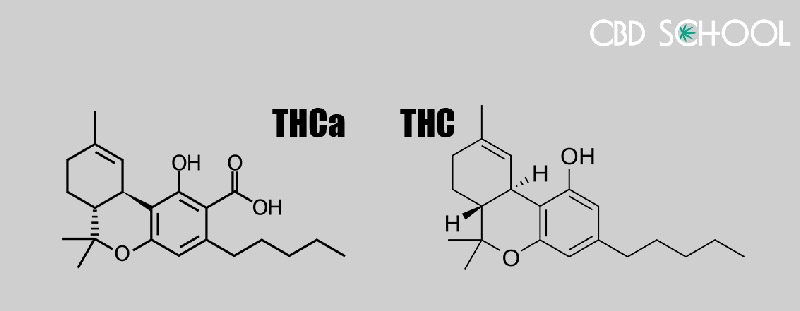
It is called carboxylation, but we may know it as the first step towards photosynthesis. We all see green leaves and plants getting greener. This happens when CO2 is added to a compound and not removed – as in the case with decarboxylation.
That’s why you will almost always see a level of cannabinoid acids (i.e. CBDA – or THCA) present on any cannabis product lab report. Before undergoing decarboxylation, the phytocannabinoids are found in an acidic state, known as cannabidiolic acid (CBDA) and tetrahydrocannabinolic acid (THCA).
Altering the Carboxyl Group
In order to convert CBDA into CBD or THCA into THC, the process of decarboxylation (or decarb process) must take place. To keep the reaction rate constant it would require both consistent higher temperatures and an extended period of time to completely decarb. Removing the carboxyl group from the cannabinoids will help these cannabinoids interact with the body’s receptors.
That’s why people smoke marijuana and don’t just consume raw cannabis. When you smoke it, you are providing heat, which creates activated THC in the marijuana, and also the intoxicating effects of THC. The process of heat alters the compounds and makes them more effective for human consumption.
Smoking and vaporizing cannabis heat up the compounds present in the plant immediately and offer the desired effects. The THCA in cannabis begins to decarboxylate after about 30 – 40 minutes of exposure at decarboxylation temperatures of 220 degrees Fahrenheit (or 110 degrees Celsius).
Of course, these numbers are not set in stone. The terpene retention will need lower decarboxylation temperatures rather than higher decarboxylation temperatures over a longer period of time. This low-temperature process is the best way to preserve terpenes.
CBD is no different. In order to harness the therapeutic benefits of CBD, it must be activated, which means that it would need to get decarboxylated before its consumed. There are, however, benefits of non-decarboxylated CBD and other cannabinoids in their raw, non-decarboxylated state as well.
The Benefits of Decarboxylated CBD
Almost all CBD products you’ll find have gone through the decarboxylation process. Why? That’s simple. When CBD decarboxylation occurs, you activate it. This decarbing process will help release the therapeutic benefits of CBD and let the consumer experience them. In other words, decarboxylation of CBD is necessary to get the most out of the beneficial cannabinoids. But, there are still some benefits to non-decarboxylated CBD and other cannabinoids. While CBD has been studied much more widely than CBDA, there are some brands that offer both “raw” (or non-decarboxylated) CBD and “regular” CBD (decarboxylated).
Both Bluebird Botanicals and Endoca, two of our favorite CBD brands, offer products containing raw non-decarboxylated CBD (CBDA). Comparing both elements can be a little difficult as the decarboxylated form is more backed up by research than the other form.
But, the few studies on CBDA do show health benefits as well.
Just like CBD, CBDA is non-psychoactive, meaning it won’t get you high and is not addictive. Studies indicate that CBDA has beneficial therapeutic effects when taken by itself or with other cannabinoids. Some of these benefits include:
In other words, decarboxylation of CBD is necessary to get the most out of the beneficial cannabinoids. But, there are still some benefits to non-decarboxylated CBD and other cannabinoids. While CBD has been studied much more widely than CBDA, there are some brands that offer both “raw” (or non-decarboxylated) CBD and “regular” CBD (decarboxylated).
Both Bluebird Botanicals and Endoca, two of our favorite CBD brands, offer products containing raw non-decarboxylated CBD (CBDA). Comparing both elements can be a little difficult as the decarboxylated form is more backed up by research than the other form.
But, the few studies on CBDA do show health benefits as well.
Just like CBD, CBDA is non-psychoactive, meaning it won’t get you high and is not addictive. Studies indicate that CBDA has beneficial therapeutic effects when taken by itself or with other cannabinoids. Some of these benefits include:
- Prevents nausea and vomiting: When compared to CBD, the acid form of this chemical was found to have a more potent effect at inhibiting vomiting and nausea3.
- Anxiolytic (anti-anxiety) effects: A study published by the Journal of Psychopharmacology explained how a lower dose of CBDA is required to have the same effect of CBD on anxiety4.
- Antibacterial properties5.
- Inhibits breast cancer cell migration6.
- Potential to reduce seizures associated with epilepsy7.
- Pain and inflammation reduction8.
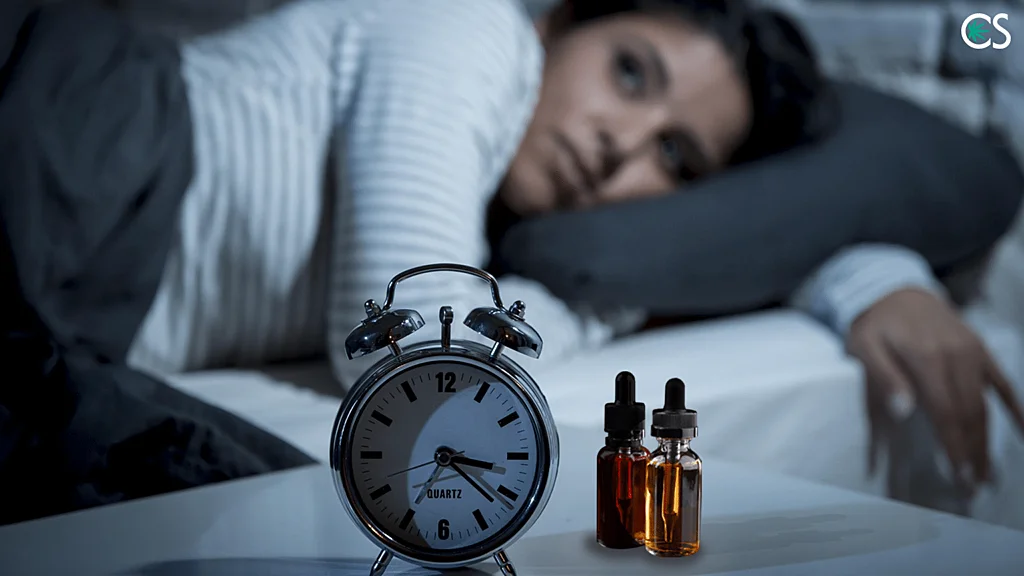 Check out our review on the best CBD products for getting deep, quality sleep.
Seeing that both non-decarboxylated CBD and decarboxylated CBD contain therapeutic benefits, a product that blends both has the potential to offer increased benefit. This is why some companies now offer products that contain both CBD and CBDA in a 1:1 ratio. Check out BlueBird Botanicals and Endoca CBD to find products, where you can find both CBD and CBDA.
Check out our review on the best CBD products for getting deep, quality sleep.
Seeing that both non-decarboxylated CBD and decarboxylated CBD contain therapeutic benefits, a product that blends both has the potential to offer increased benefit. This is why some companies now offer products that contain both CBD and CBDA in a 1:1 ratio. Check out BlueBird Botanicals and Endoca CBD to find products, where you can find both CBD and CBDA.
How is CBD Decarboxylated?
When it comes to decarboxylation, the temperature is everything. Remember that heat is what causes the decarboxylation process to take place, and while a lower temperature may take longer, it’s actually something that’s preferred. Why? Decarboxylating CBD (and THC) at lower temperatures allows the preservation of terpenes that are responsible for the aroma and flavor of cannabis. Terpenes also possess therapeutic benefits of their own. They work together with CBD and other cannabinoids to boost their overall effects.How to Decarboxylate Cannabis
If you think that CBD needs to be decarboxylated, you would want to try decarboxylating cannabis on your own? You can make your very own homemade edibles, oils, and more! Decarboxylation is not a complicated process. Decarbing cannabis requires a few ingredients.
You’ll need some dried cannabis flower pieces and an oven. Check out the following steps to decarboxylate cannabis at home.
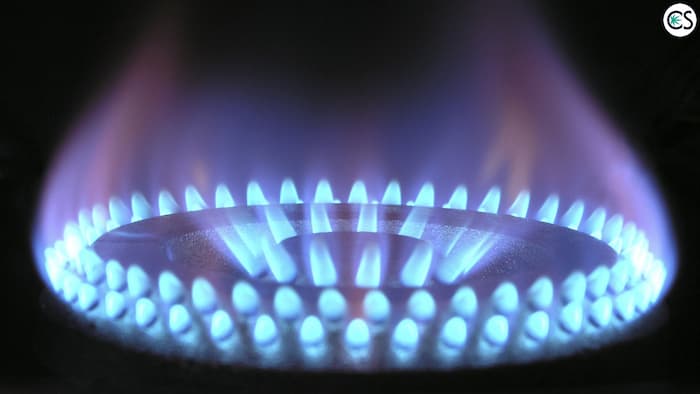
- Preheat oven to 200-300 degrees Fahrenheit
- Break up dried pieces of the cannabis flower (cannabis buds) until they are in small pieces and place cannabis flower pieces on a baking sheet on some parchment paper in a single layer.
- Place baking sheet in the oven and bake cannabis for 30-40 minutes, ensuring to “stir” the baking cannabis buds every 10-15 minutes.
- Once the cannabis flower has turned from green to medium-brown, it can be removed from the oven. Decarboxylation is done!
Some things to consider when you decide to decarboxylate weed in your oven. The type and strain of cannabis flower you use for your decarboxylated cannabis will impact decarboxylation time and decarboxylation temperature.

Different temperatures and times may be needed for properly de-carbing cannabis in your oven, and by adjusting the decarboxylation temperatures and time, you’ll get the best results for your decarboxylated cannabis.
To obtain a perfect decarboxylation temperature you can find a decarboxylation temperature chart online. This decarboxylation temperature chart provides a list of the cannabinoid acids, as well as the suitable temperatures in degrees Fahrenheit and degrees Celsius.
It’s an important step for anyone wishing to producers a fully decarboxylated product.
Producing Your Own Decarboxylated Cannabis
Many who are interested in making edibles will benefit from the process of decarboxylation. There may be many ways listed to do this process, but the easiest way to do this is in the oven on a baking sheet in order to control the degrees celsius (or Fahrenheit) of the oven.
While others will use a slow cooker or mason jar. The slow cooker method involves introducing solvents such as cooking oils and is best used in several cooking recipes, topicals, and in some cases the resulting decarboxylated cannabis can be used to make capsules and tinctures.

The mason jar acts as a baking vessel and holds the contents while you bake it.
When you have produced your own CBD from the cannabis flowers and buds, you can use it to make your own homemade edibles and extractions. Cannabis edibles can be a perfect way to get all the benefits of cannabis, and making edibles is relatively easy, once you get the dosage right.
Does Decarboxylation Destroy CBD?
Decarboxylation occurs with the application of heat over a period of time. This means decarboxylation is dependent on time and temperatures at varying stages to achieve a final product such as CBD gummies, capsules, or tinctures.
The trick is to decarboxylate weed without destroying CBD and THC is to heat it at an ideal temperature. By gradually applying heat you avoid cannabinoid degradation or combustion.
THCA in cannabis begins to decarboxylate at roughly 220 degrees Fahrenheit (or 110 degrees Celsius) after around 30-45 minutes of exposure. Full decarboxylation may require more time to occur, and even though trace amounts of raw cannabis may show up on lab tests, the final product will be a fully decarb weed that will have all the benefits of CBD, THC, and other minor cannabinoids.
This is the perfect decarboxylated cannabis for making edibles, oils, and more.
Final Thoughts on Cannabis Decarboxylation
Decarboxylating cannabis is one of the most important parts of activating the various therapeutic compounds and amino acids found in cannabis. Although decarboxylation is something that is relatively unheard of to the basic consumer, all of the CBD products that you have come to know and enjoy wouldn’t exist without it.
Decarboxylation is an extremely important part of harnessing the benefits of CBD. By testing your process and modifying your temperatures and time of the decarb process, you can achieve a successful decarbed cannabis. Through the decarboxylation process, you’ll end up with all of the beneficial cannabinoids you’ll need to make your edibles, capsules, tinctures and more!
References
1Phytocannabinoids 101: What Are Phytocannabinoids. (n.d.). Retrieved January 28, 2021, from https://www.marijuanadoctors.com/resources/phytocannabinoids/
2Wang, M., National Center for Natural Products Research, Wang, Y., Avula, B., Radwan, M., Wanas, A., . . . B, A. (2016, December 01). Decarboxylation Study of Acidic Cannabinoids: A Novel Approach Using Ultra-High-Performance Supercritical Fluid Chromatography/Photodiode Array-Mass Spectrometry. Retrieved January 28, 2021, from https://www.liebertpub.com/doi/full/10.1089/can.2016.0020
3Regulation of nausea and vomiting by cannabinoids
Linda A Parker, Erin M Rock, and Cheryl L Limebeer, Br J Pharmacol. 2011 Aug; 163(7): 1411–1422https://doi.org/10.1007/s00213-017-4626-5
4Rock, E. M., Limebeer, C. L., Petrie, G. N., Williams, L. A., Mechoulam, R., & Parker, L. A. (2017). Effect of prior foot shock stress and Δ9-tetrahydrocannabinol, cannabidiolic acid, and cannabidiol on anxiety-like responding in the light-dark emergence test in rats. Psychopharmacology, 234(14), 2207–2217. https://doi.org/10.1007/s00213-017-4626-5
5Cary Leizer BA, David Ribnicky PhD, Alexander Poulev PhD, Slavik Dushenkov PhD & Ilya Raskin PhD(2000) The Composition of Hemp Seed Oil and Its Potential as an Important Source of Nutrition,Journal of Nutraceuticals, Functional & Medical Foods,2:4,35-53,DOI: https://doi.org/10.1300/J133v02n04_04
6Takeda, S., Okajima, S., Miyoshi, H., Yoshida, K., Okamoto, Y., Okada, T., Amamoto, T., Watanabe, K., Omiecinski, C. J., & Aramaki, H. (2012). Cannabidiolic acid, a major cannabinoid in fiber-type cannabis, is an inhibitor of MDA-MB-231 breast cancer cell migration. Toxicology letters, 214(3), 314–319. https://doi.org/10.1016/j.toxlet.2012.08.029
7WO2017025712A1 – Use of cannabinoids in the treatment of epilepsy. (n.d.). Retrieved January 29, 2021, from https://patents.google.com/patent/WO2017025712A1/en
8Takeda, S., Misawa, K., Yamamoto, I.,; Watanabe, K. (2008, September 01). Cannabidiolic Acid as a Selective Cyclooxygenase-2 Inhibitory Component in Cannabis. Retrieved January 29, 2021, from https://dmd.aspetjournals.org/content/36/9/1917.long



